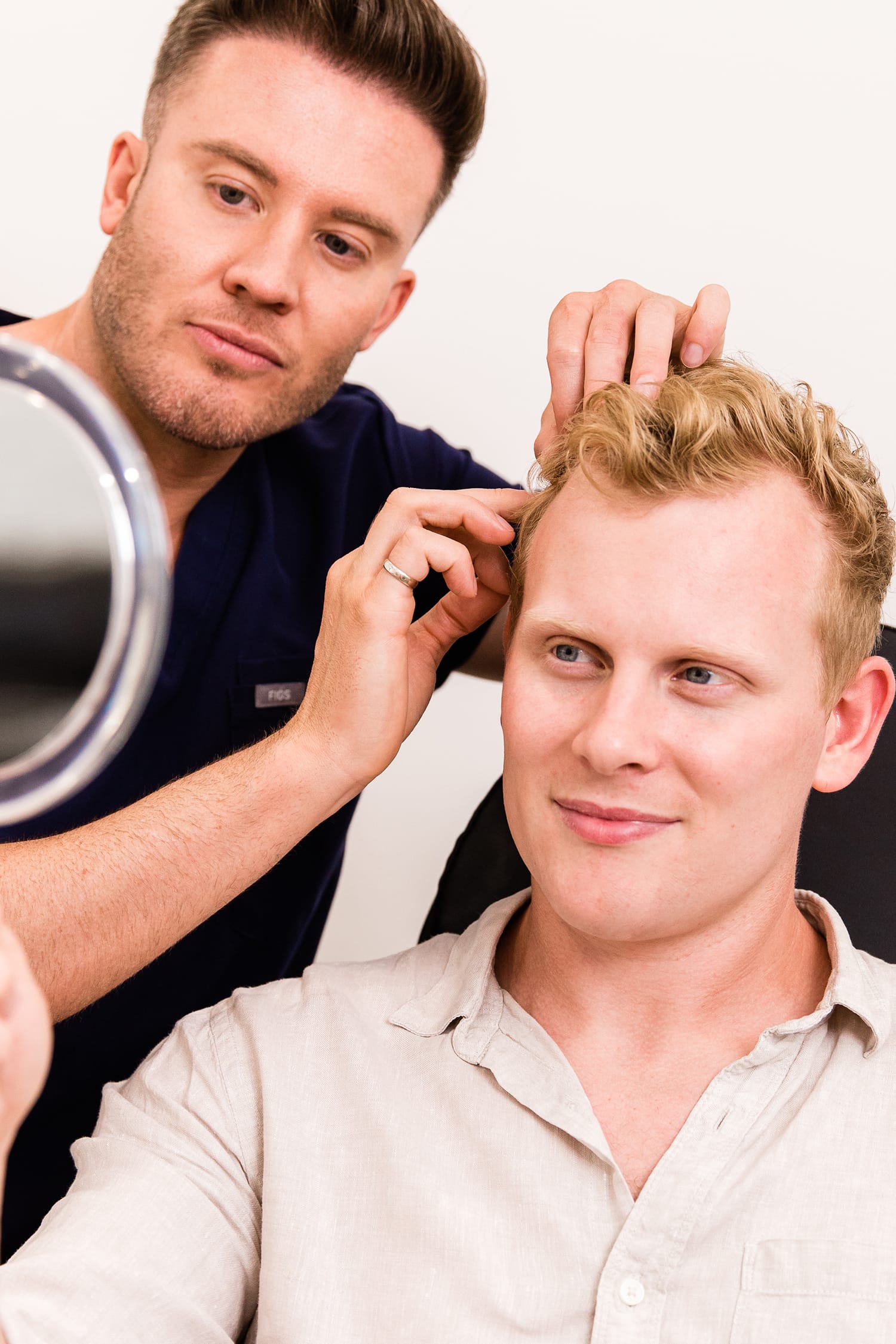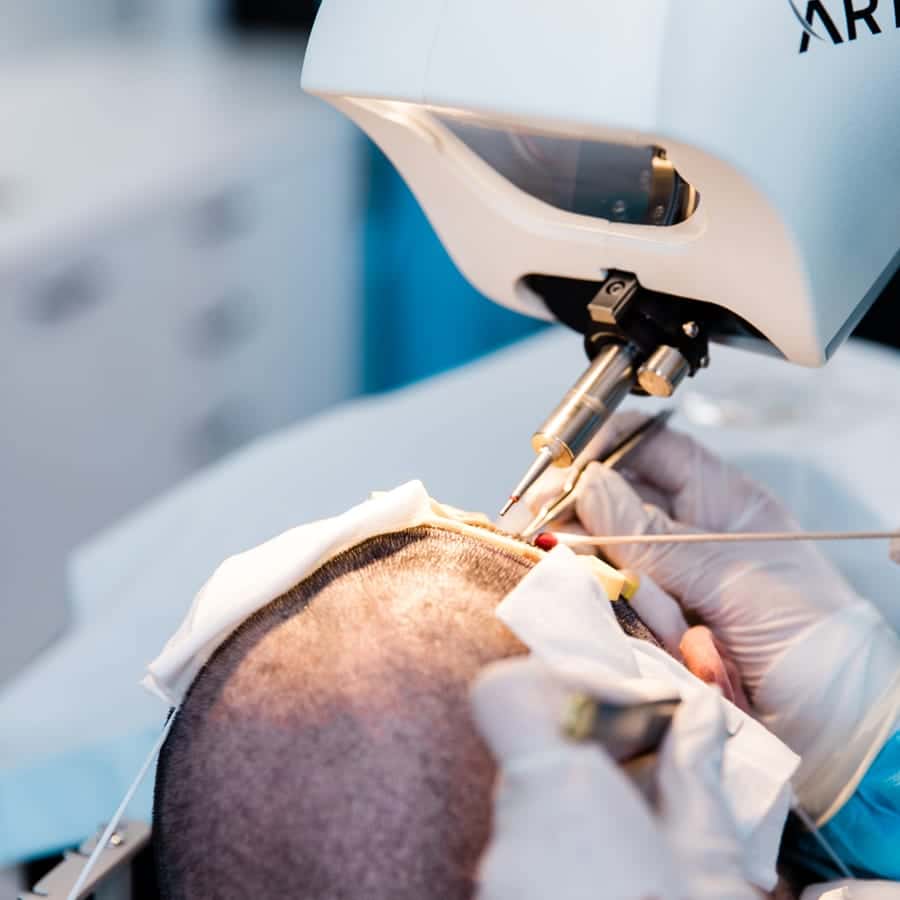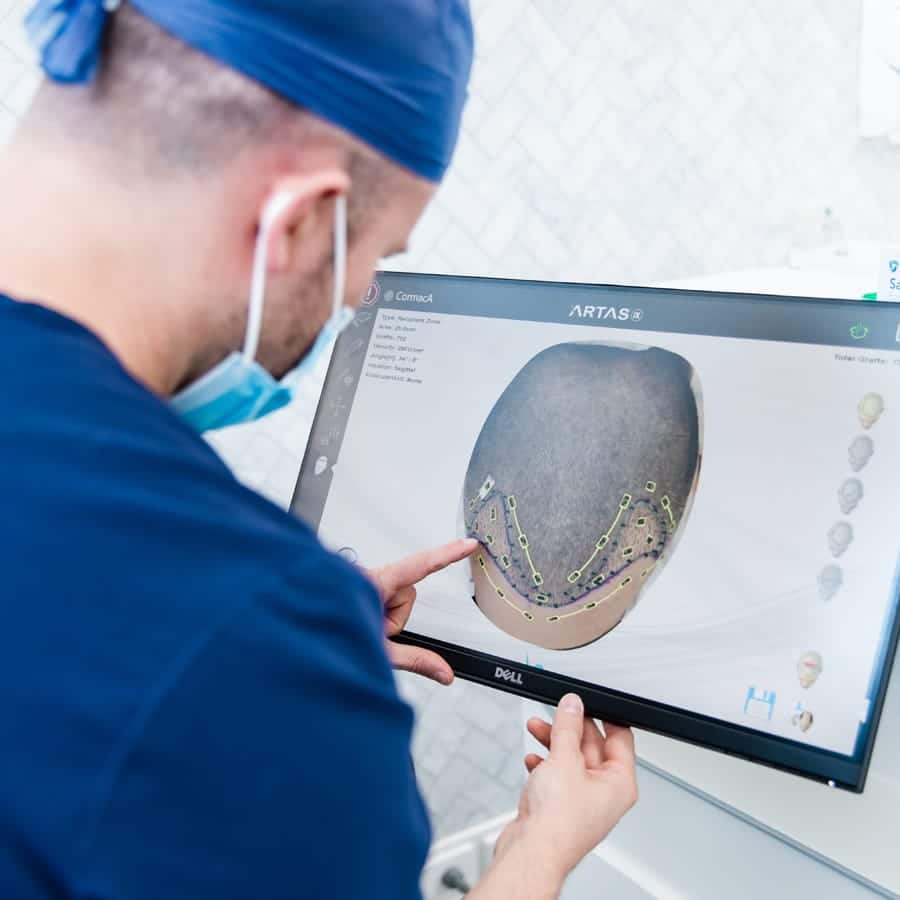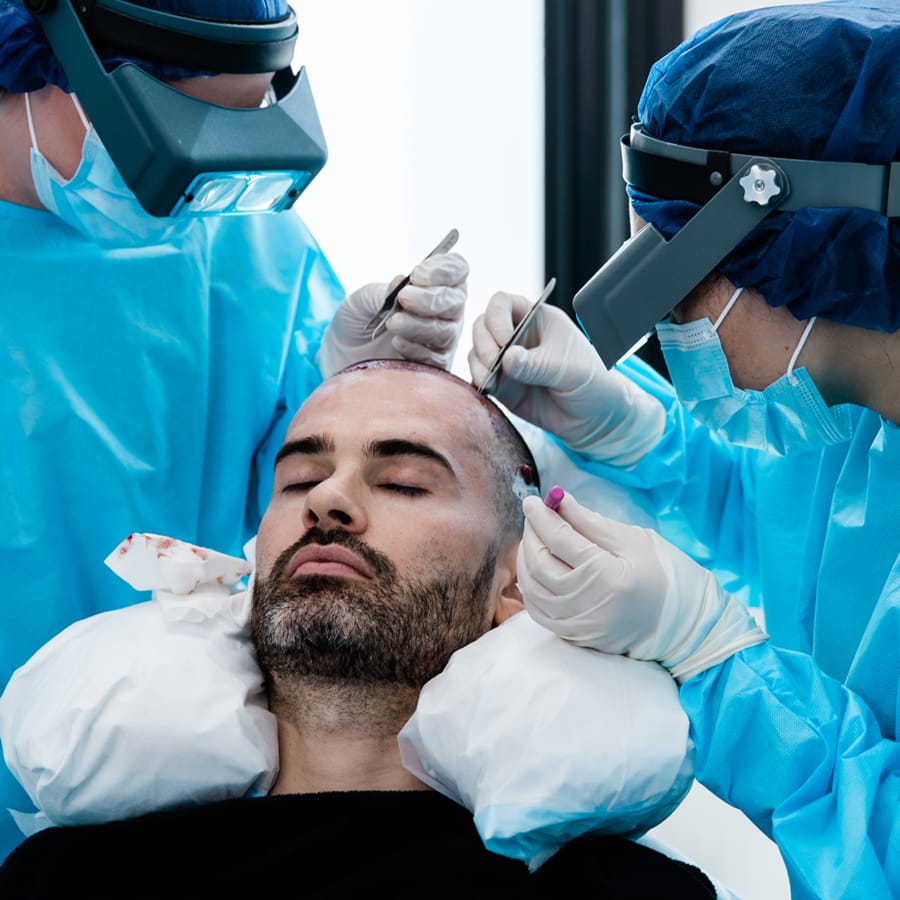Losing hair is terrible for any male but replacing it with an unnatural looking hair transplant is even worse. Our aim is to restore hair in a completely natural manner.
The Derm Lab offers a state of the art experience like no other. Our process includes an in-depth initial consultation, full medical history review and obligation free treatment plan to pre-operative planning and of course - your big day and beyond!
Our process is thorough and transparent with patient results and satisfaction being our priority - it's not about hitting sales targets set by corporate.
If you’re looking to restore hair lost due to androgenic alopecia, we'd love to meet you.
















